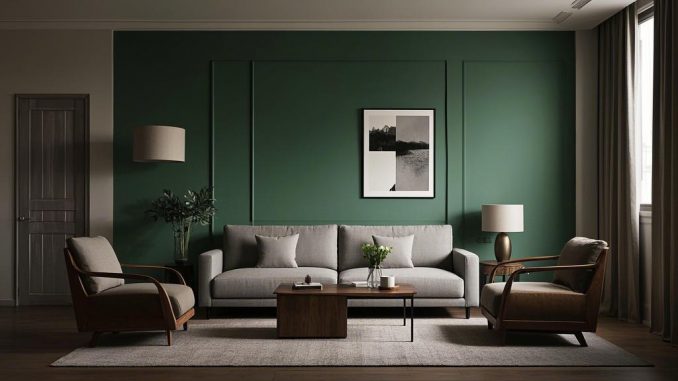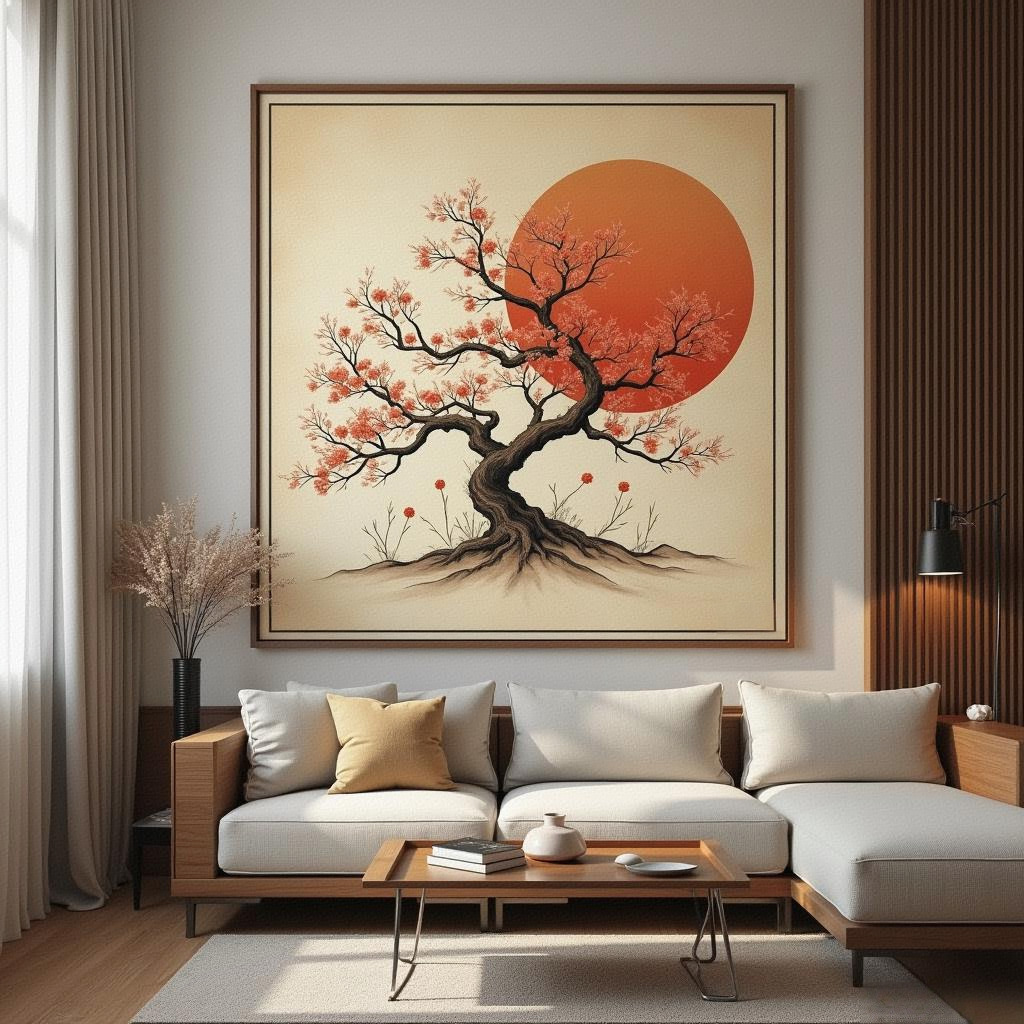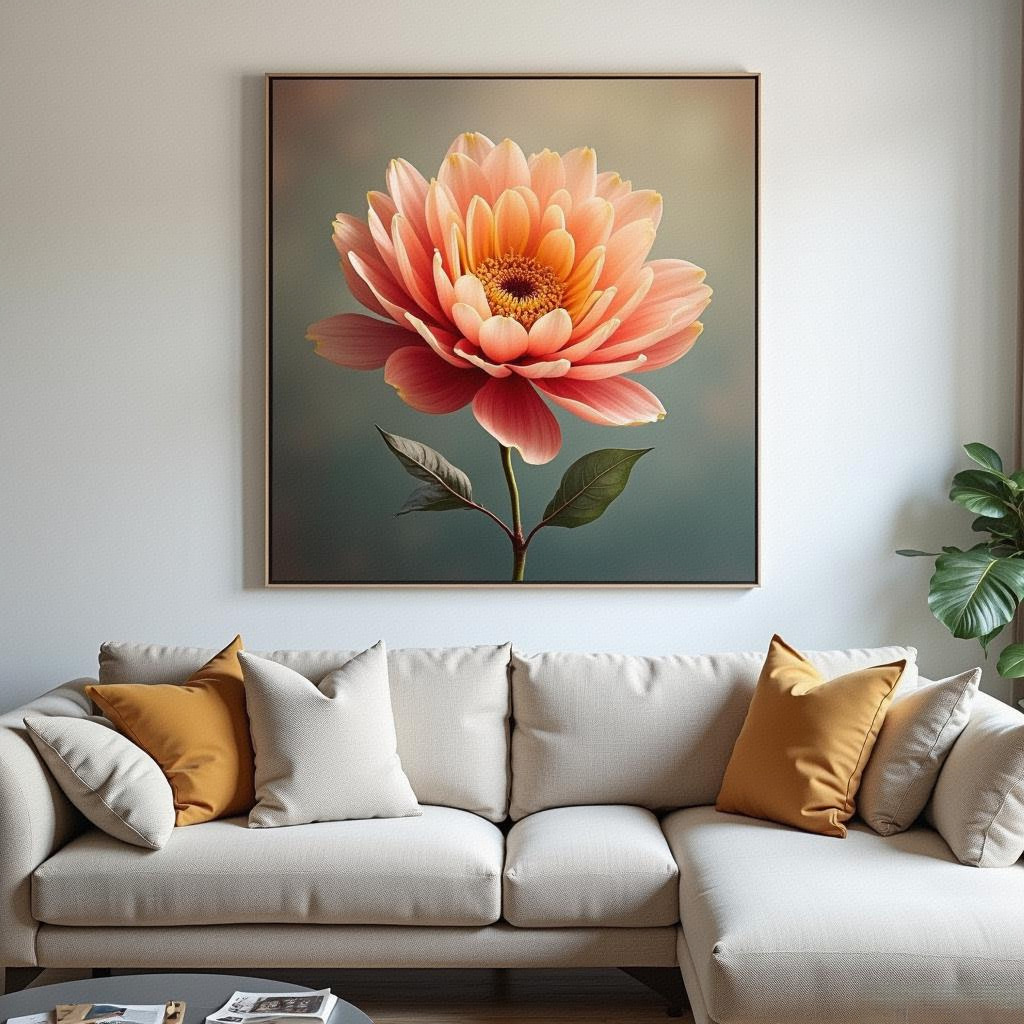
I. Introduction
In traditional Chinese culture, Feng Shui has a profound influence on various aspects of daily life, including home decoration. Home decorative paintings are an essential part of creating a harmonious living environment. The content and placement of these paintings follow certain Feng Shui principles, aiming to bring positive energy, prosperity, and balance to the household.

II. Content Considerations in Feng Shui for Home Decorative Paintings
- Auspicious Subjects
- Flowers:
The peony is highly regarded. It symbolizes wealth, prosperity, and beauty. In Feng Shui, because the peony is associated with the element of wood, it can be placed in different directions based on the principles of the five elements. For example, it can be placed in the north (associated with water, where wood can thrive as water nourishes wood) or the south (associated with fire, as wood can promote fire).

Lotus is another symbolically important flower. It represents purity, harmony, and spiritual cleanliness. It is often hung in living rooms, meeting rooms, or bedrooms for the elderly due to its calming and positive – connotation properties.
- Animals:
The koi fish painting is very popular. In Chinese customs, fish represents surplus every year, and koi fish swimming in water also signifies the accumulation of wealth. A double – fish – playing – in – water painting is ideally placed at a 45 – degree angle to the “wealth – position” opposite the main entrance of the living room.

The magpie is also a symbol of good luck. However, when choosing magpie – themed paintings, care should be taken to ensure that the magpies in the painting do not appear aggressive or in an improper posture.
- Figures:
- Calligraphy can be used for various purposes in Feng Shui. For example, it can block the “door – throttling” when hung above a door that faces a bedroom directly. Calligraphy with positive messages, such as those promoting perseverance or wisdom, can also be hung in study rooms or offices to inspire people.
- Avoided Subjects
- Paintings with too dark colors or excessive black may bring a feeling of heaviness, depression, and negative mindset to the viewers.
- Overly bright – colored paintings can agitate people, make them irritable, and lead to impulsive behavior.
- Paintings depicting declining scenes, like the setting sun, can dampen people’s spirits and reduce their motivation.
- Portraits of more than two people may cause emotional instability among family members.Especially portraits of deceased relatives can bring a sad and sentimental atmosphere to the family. Sad family atmosphere.
III. Placement Rules of Home Decorative Paintings in Feng Shui
- Living Room
- The living room is the core area of the home. The hanging position of decorative paintings here should be in line with the overall aesthetic and functional requirements.
- When hanging a large – scale painting, if the space height is less than 4 meters and the vertical height of the painting is more than 1.75 meters, it is recommended to place it directly on the ground. For paintings displayed in a regular manner, the principle of parallel symmetry is often adopted. 2 – 4 decorative paintings are evenly symmetrically distributed horizontally or vertically, forming a stable and concise effect.
- The painting should not be placed opposite the door directly, especially when it depicts a door – throttling scene. If there is a need to block the door – throttling, calligraphy can be hung instead.
- Bedroom
- The bedroom is a place for rest and sleep. The paintings hung here should be gentle and soothing.
- Avoid hanging paintings with strong dynamics, such as waterfalls, as they are believed to cause the family’s luck to fluctuate. Also, do not hang paintings with fierce wild animals opposite the bed or in a position that can be seen immediately upon waking up, as this can cause a sense of insecurity.
- The height of the painting should be about 1.5 – 2 meters from the ground, which is roughly at the height of a person’s line of sight when standing upright.
- Study or Office

- In the study or office, paintings that can inspire motivation and concentration are preferred.
- For example, a painting of the great roc spreading its wings can be hung in the study or living room to give people a sense of “a journey of ten thousand miles” and positive uplifting mood. But be careful not to let the “beak” of the roc face the head when hanging it.
- Dining Room
- The dining room is mainly for dining. Paintings related to food, plants, or fruits can be hung here to stimulate appetite. For example, a painting of a lush orchard can be a good choice.
IV. General Placement Principles in Feng Shui for Home Decorative Paintings
- Lighting Consideration
- Pay attention to the lighting when hanging paintings. Especially for paintings, since each painting has its own light and dark areas, try to place the light source on the upper left side. In a sunny living room, the painting can be placed on the right wall at a 90 – degree angle to the window, so that the natural light outside and the light on the painting can echo each other harmoniously.
- Height Adjustment
- The height of the hanging painting should be appropriate for easy viewing. Generally, the center of the painting should be at a slightly higher position than the vertical line of a standing person, usually about two meters from the ground. Paintings should also match the size of the space. In a small room, it is not suitable to hang huge paintings.
- Quantity Limitation
- The number of paintings hung in the home should not be too many. A home with too many paintings can make people feel cluttered and overwhelmed. One or two carefully selected paintings can play a key role in upgrading the overall look of the home.
- Coordinate with Interior Decoration
- The color of the painting should coordinate with the color of the room and furniture. For example, a traditional Chinese – style room is more suitable for hanging traditional Chinese paintings.

Also, the theme of the painting should match the function of the room. For example, a static – themed painting is suitable for the bedroom, while a living room can choose more vibrant paintings.
- Seasonal Changes
- It is also possible to change the paintings with the seasons. For example, in spring, paintings of blooming flowers like peach blossoms can be hung, while in winter, paintings of warm – toned scenes like red stove and green tea can be used to add a sense of living atmosphere to the home.
In conclusion, the content and placement of home decorative paintings in Feng Shui are based on a combination of cultural traditions, aesthetic concepts, and philosophical ideas. Although some of the principles may not be supported by modern scientific evidence, they reflect people’s pursuit of a harmonious, prosperous, and beautiful living environment.

Leave a Reply